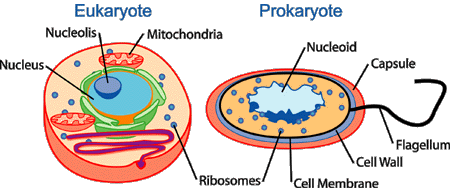Bacterial chromosome
E. coli contains a single chromosome consisting of a circular dsDNA molecule with a molecular mass of 2.7-109 and a length of 1.36 nm. It contains 4.1-106 base pairs (bp). The DNA is naturally coiled into loops and superhelices in a cluster called a nucleoid. This formation is not separated from the cytoplasm by a nuclear membrane as in the cells of higher organisms. It is fixed to the cytoplasmic membrane in several places.
In addition to DNA, the nucleoid contains dozens of different proteins, including enzymes required for replication and expression of genetic information and histone-like proteins.
The bacterium contains other smaller circular dsDNAs, called plasmids, that have various functions. For example, they allow the transfer of DNA from the donor bacterium to the recipient bacterium during their conjugation (F-plasmid). Others contain genes encoding enzymes capable of modifying antibiotics; their expression results in resistance to the antibiotic (R-plasmid).
Sources[edit | edit source]
Related articles[edit | edit source]
Bibliography[edit | edit source]
- ŠTÍPEK, Stanislav. Stručná biochemie : Uchování a exprese genetické informace. 1. edition. Medprint, 1998. pp. 92. ISBN 80-902036-2-0.

